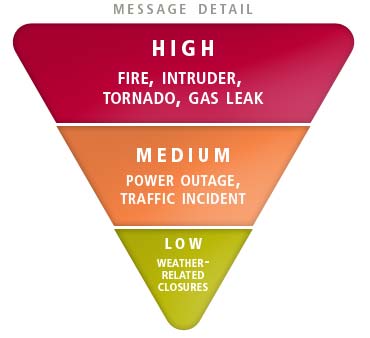Emergency Mass Notification Revisited
Sometimes you need a wake-up call. Mine came at 8:12 a.m. Thursday, March 5, when a massive natural gas explosion blew out four historic buildings in downtown Bozeman, MT, just 50 miles away. Earlier in the week I had received a press release from CDW-G about a "Mass Notification Toolkit" but had been too busy to pursue it. "Just another vendor sales piece," had been my assumption. With fire departments from around the county rushing to the scene and a multi-block evacuation underway, I decided to take a closer look.
And I was glad I did.
Like every other journalist in America, I did a column after the massacre at Virginia Tech in 2007, "It's All About Risk." That article was followed by four others in this newsletter,"Disaster Recovery: Personal and Up Close," "Things that Go Bump in the Night," "Planning for the Next Disaster: Pandemic," and, finally, "Best Practices in Emergency Communications."
But then the topic sort of dropped off my radar screen. Thursday's explosion changed that. The fires couldn't be completely extinguished until the gas flow in ruptured mains was completely shut off--something that couldn't be done until later that evening--without risking gas build up and another explosion. As the crisis wore on and evacuations of nearby schools and businesses began because of air quality concerns public communications became an essential. Where can worried parents pick up children from nearby schools? (The answer was the public library.)
It was time to revisit emergency mass notification.
This is Not a Test....
I was relieved to find that the Toolkit, whose leadoff line--"This is Not a Test..."--wasn't a sales pitch for a vendor's product but rather an overview of emergency communications that included templates, graphics, and statistics that would be very useful as a college or university prepared its own emergency communications plan.
The toolkit is organized into five topics:
- Who needs to be involved;
- What your mass notification IT infrastructure look like;
- What notification system tools are available;
- What to tell your constituents; and
- How to drive constituents to sign up.
The toolkit concludes with references that include case studies from Brandeis University, Lakeland Community College, San Ramon Valley Unified School District, and the University of Louisville. To follow up with one of them, Brandeis University, I spoke with John Turner, the University's director of networks and systems.
Emergency Communications at Brandeis University
According to Turner, "Virginia Tech was a wake-up call. After that tragedy a number of campus units, including IT, were tasked with coming up with a plan for mass notification--with a 30 day deadline." With little time for planning, they begin researching what other campuses, such as the University of Central Florida, had done. Some ideas were easy to implement. Since Brandeis had already deployed approximately 5,000 Cisco IP phones across the campus and the dormitories had been equipped with one phone per resident, they were able to deploy Berbee's InformaCast software in less than four hours to provide a basic PA messaging system. Other notification strategies, such as a SMS (short messaging system) for cell phone users and a siren, took longer to implement.
According to Turner, the original objective was to get the word out, "One message, loud and clear." As their strategy has evolved, however, it has become more sophisticated and now employs different technologies to reach different communities and is adding the capability to send different messages to specific communities and locations. He cited, for example, a hypothetical crisis in which the occupants of a building were directed to "stay in the building" or perhaps "go to parking lot A and wait for the Biological Rapid Response Team" while everyone else was directed to "stay away" or "evacuate the area." He also stressed the importance of tailoring the message to the problem. "You can't treat every situation as the same. Some are more important than others." (For a non-technical discussion of this point, see Aesop's Fable, "The Shepherd's Boy and the Wolf," AKA "The Boy Who Cried Wolf.")
Turner noted that Brandeis had been working with CDW-G for a year and a half on emergency notification and was pleased to see the toolkit emerge. "It would have saved us a lot of legwork if it had been available when we were under our 30-day deadline." He pointed to the section on getting people to sign up as being particularly useful.
Higher Education Has Done a Pretty Good Job
In a 2008 study by CDW-G, "This is a Test--This is Only a Test: Updating America's Emergency Alert Infrastructure," they found that 90 percent of the Americans sampled either didn't know or were unsure if their city had a modern mass notification system! While I don't have any statistics to back it up, my guess is that if we polled our students we would get much different, and more positive, result. But better is necessarily good. As our memory of the Virginia Tech tragedy fades, we should take time to reassess whether we are ready for the next time.
About the Author
Doug Gale is president of Information Technology Associates, LLC (www.it associates.org) an IT consultancy specializing in higher education. He has more than 30 years of experience in higher education as a faculty member, CIO, and research administrator.